Chapter 17 - Simple Harmonic Motion
Simple Harmonic Motion
Simple harmonic motion describes any periodic motion that is the result of a restoring force that is proportional to the displacement
The motion of a vibrating mass-spring system or a pendulum is an example of a simple harmonic motion
Because simple harmonic motion involves a restoring force, every simple harmonic motion is a back-and-forth motion over the same path
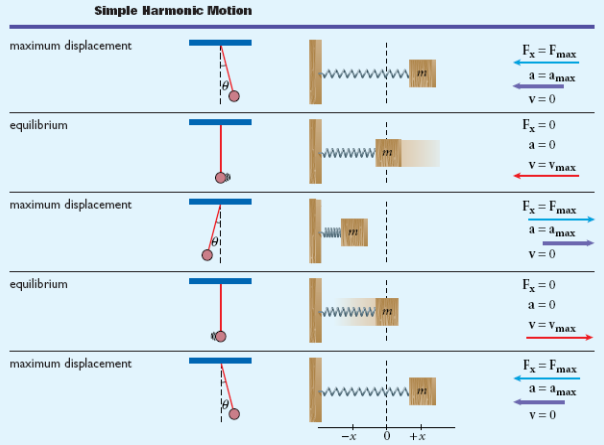
A simple pendulim consists of a mass called a bob, which is attached to a fixed string
Like the spring, the pendulum oscillates, or moves back and forth at regular motion
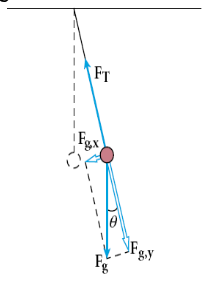
Amplitude of motion is the maximum displacement from equilibrium
For a pendulum,
measured by how high the bob is lifted above its equilibrium point (also angle it is let go from)
For a mass-spring system,
the maximum amount the spring is stretched or compressed from its equilibrium position
units —> radian, degrees and meters
The period (T) is the time that it takes a complete cycle to occur
The SI unit of period is seconds (s)
The frequency (f) is the number of cycles or vibrations per unit of time
The SI unit of frequency is hertz (Hz)
Hz=s^-1
f = 1/T or T = 1/f
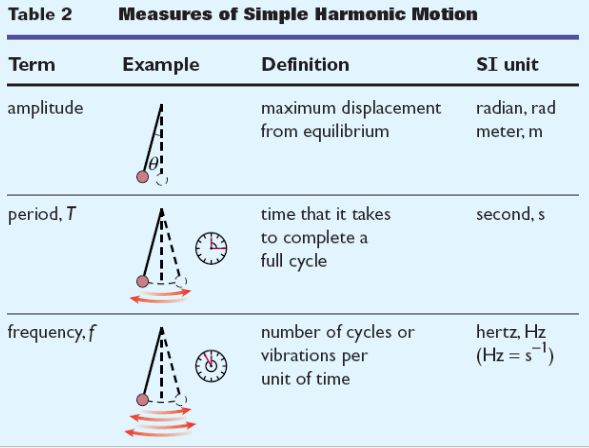
The period of a simple pendulum depends on the length L and on the acceleration due to gravity g
T=2\pi\sqrt{\frac{L}{g}} or period=2\pi\sqrt{\frac{leng\operatorname{th}}{\left.free-fall\right)acceleration}}
The period does not depend on the mass of the bob or on the amplitude (for smaller angles)
EXAMPLE:
A 1.3 m long pendulum swings back in forth in a classroom. What is its period?
T=2\pi\sqrt{\frac{L}{g}}
T=2\pi\sqrt{\frac{1.3}{9.8}}
T=2\pi\sqrt{0.133}
T=2\pi\left(0.364\right)
T=2.29 seconds
Waves
A rhythmic disturbance that carries energy through matter or space
Mechanical waves: require a medium to transport energy
Example: water waves, sound waves, springs
Electromagnetic waves: do not require a medium, can travel through vacuum
Example: X-rays, light, radio waves
Oscillation is the back and forth motion that is repeated
Simple harmonic motion has no friction involved, the motion continues the same way, never changing
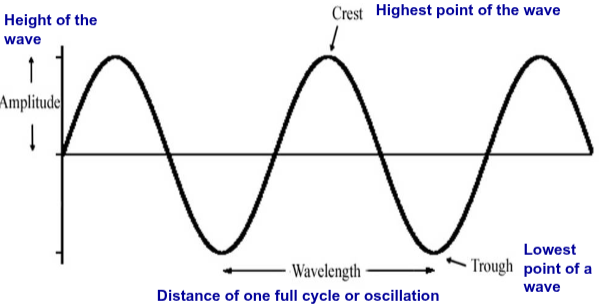
Waves can have multiple crests and troughs
Amplitude is measured in meters
The wavelength can be measured anywhere on the wave
Easiest way to measure is usually crest to crest
Any distance between successive (non-repeating) parts of a wave
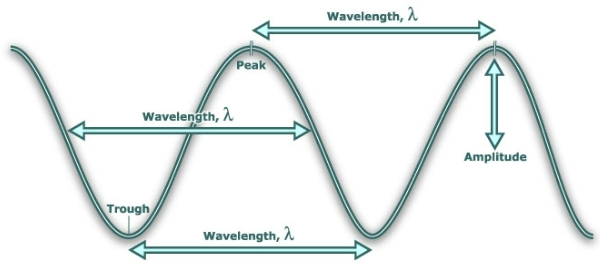
Waves transfer energy by the vibration of matter
Waves are often able to transport energy effciently
The rate at which a wave transfers energy depends on the amplitude
The greater the amplitude, the more energy a wave carries in a given time interval
Waves are disturbances in a medium
When water drops hit water, it creates a disturbance in the water
The disturbance moves, not the water
Period —> T
Time it takes for one complete wavelength
T = time it takes/# of oscillations
Measured in seconds (s)
Frequency —> F
How frequently the oscillation occurs
How many oscillations occur in 1 second
F = number of oscillations/time
Measured in Hertz (Hz) = 1/second
Frequency and Periof are very closely related
They are each other’s inverse
T=\frac{1}{f} and f=\frac{1}{T}
Types of mechanical waves
Transverse: particles travel perpendicular to the motion of the wave
←· → ←·→ ←·→ ←·→ ←·→ ←·→
Longitudinal: particles travel parallel to the motion of the wave
Water waves close to the shore are actually called surface waves because they are both transverse and longitudinal
We can measure the velocity of the wave the way we always measured it
velocity = displacement/time or v=\frac{d}{t}
OR
v=\frac{\lambda}{T} aka V = wavelength/period
but more commonly seen as v=\lambda f since f=\frac{1}{T}
λ is lambda and stands for wavelength
EXAMPLE:
A surfer notices that in 10 seconds, 4 ocean waves strike the beach. He also estimates that the waves are 3 m apart. What is the speed of the waves?
In 10 seconds, 4 waves pass, so \frac{10}{4}=2.25 sec per 1 wave
V=\frac{D}{t}
V=\frac{3m}{2.5\sec}
V = 1.2 m/s
A radio wave is oscillating at a rate of 43 times per second. The distance between a crest and a trough is 0.2 m. What is the wave speed?
V=\lambda f
V=43\left(0.4\right)
V= 17.2 m/s
Superposition
Superposition is also called interference
2 or more waves are always needed
Waves collide with each other to make a new wave, even if for only a brief amount of time
There are 2 types of interference:
Constructive: waves are in-phase and add together
Destructive: waves are out of phase and subtract
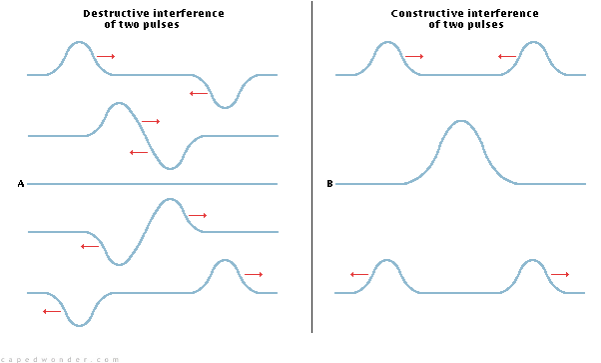
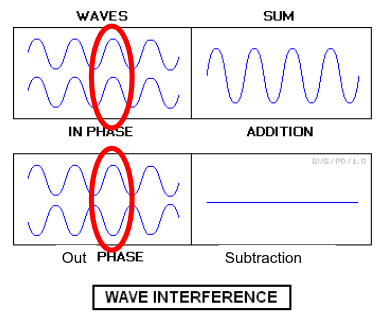
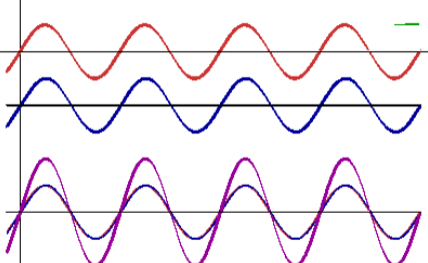
Standing Waves
They appear to be ‘standing’ still in their left to right motion
They are in constant motion though!
Standing waves can occur when a wave interferes with it’s reflected self
There are two main parts of the standing wave:
The node
points of complete destructive interference
do not move
The antinode
points of complete constructive interference
largest amplitude points of the standing wave
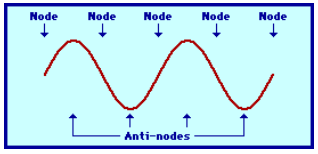
On a musical instrument, the strings are fixed at both ends
This means that there must be nodes at each end, and this limits the possible vibrations *or oscillations) of the string
Each one of these standing waves (below) have the wavelengths that produce a frequency known as harmonics
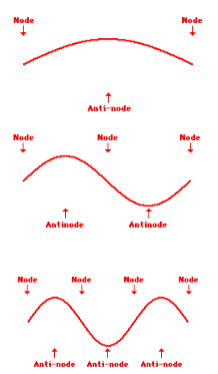
The first standing wave has what is known as the fundamental frequency, f
The second standing wave as the second harmonic, 2f
The third standing wave has the third harmonic 3f